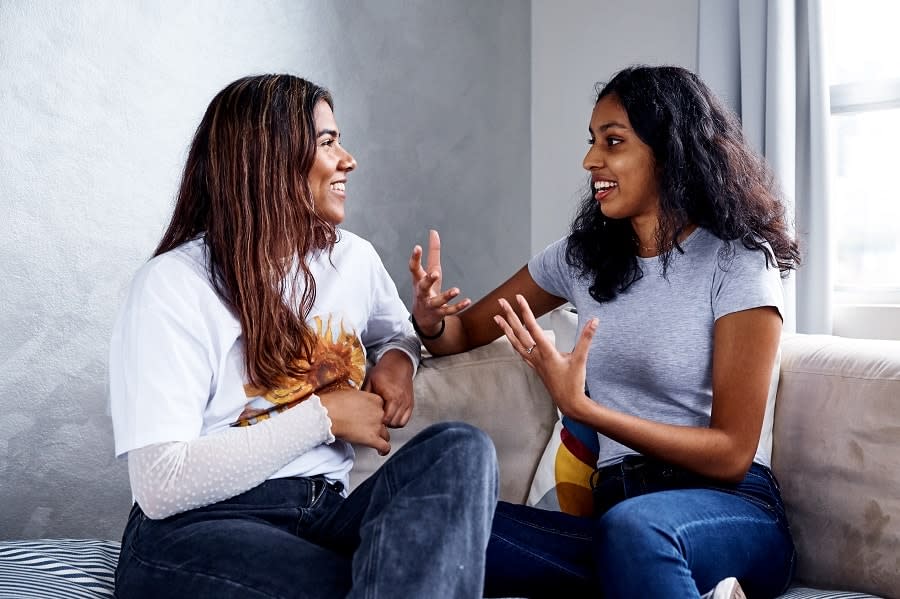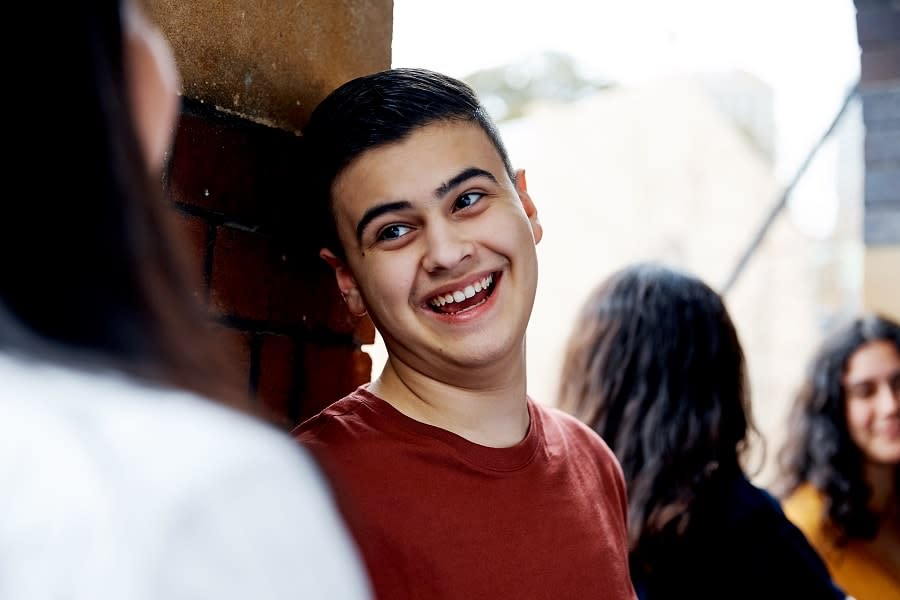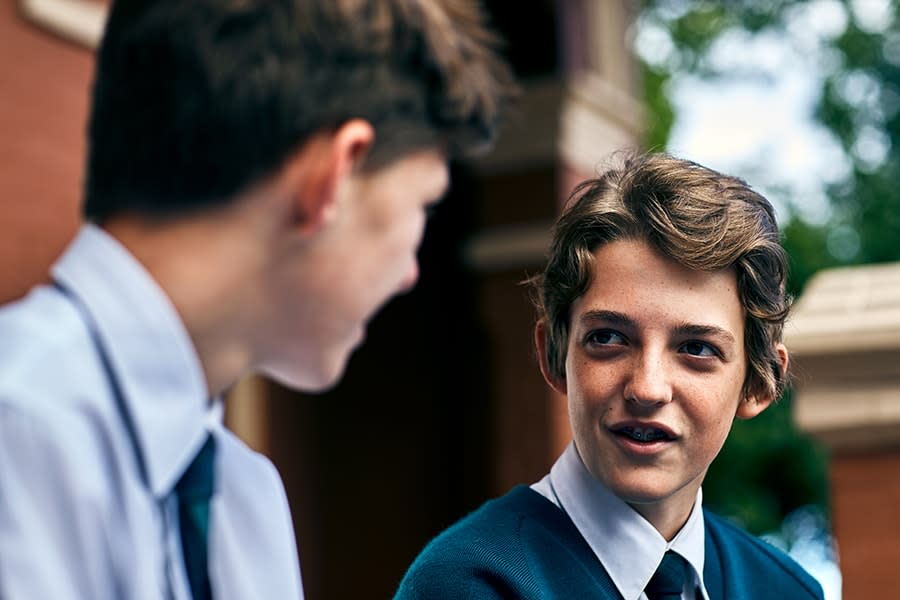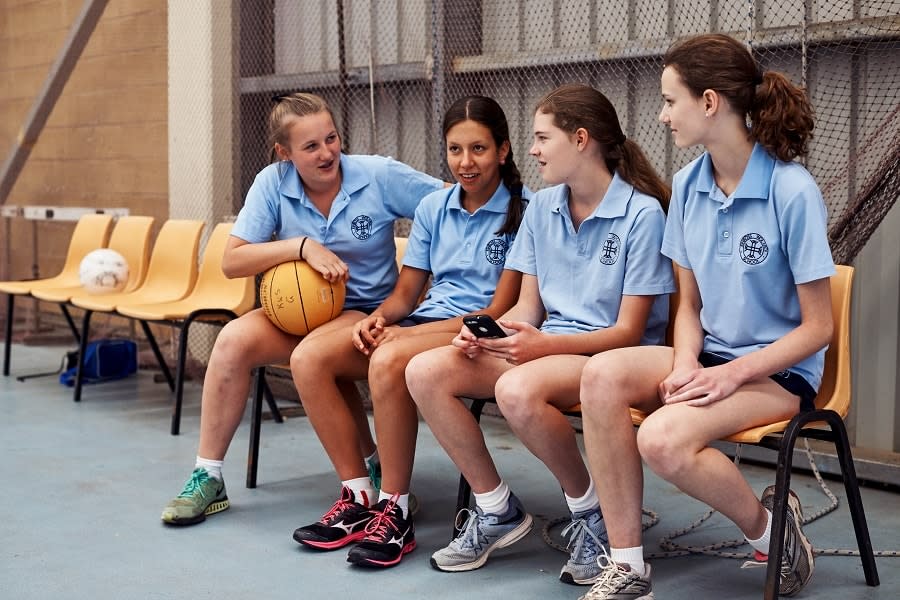Evaluating and analysing friendships is an important step for students to ensure they are surrounding themselves with people who support and care about them. By thinking about how good friends make them feel and what people should do in friendships, students can critically evaluate their relationships.

Year level
7-8

Duration
60 minutes

Type
In class activity
Online learning

SEL Competencies
Social awareness
Relationship skills
Learning intention
Students examine healthy relationships by developing an understanding of what makes a good friend, and by learning skills to identify warning signs for negative relationships.
Key outcomes
By the end of the lesson, students will be able to:
identify how a good friend makes them feel
identify warning signs of negative friendships
describe what makes a good friend
examine friendships and determine whether they are healthy or not.
Materials needed
Access to the ReachOut.com article ‘What makes a good friend?’
Students’ workbooks
Mapped to
Australian Curriculum: Health and Physical Education
Analyse the impact of changes and transitions, and devise strategies to support themselves and others through these changes (AC9HP8P02)
Examine the roles of respect, empathy, power and coercion in developing respectful relationships (AC9HP8P04)
Australian Curriculum: General Capabilities
Personal and Social Capability:
Self-awareness
Self-management
Social awareness
Social management
NSW PDHPE Syllabus
Examines and evaluates strategies to manage current and future challenges (PD4-1)
Applies and refines interpersonal skills to assist themselves and others to interact respectfully and promote inclusion in a variety of groups or contexts (PD4-10)
Victorian Curriculum: Health and Physical Education
Evaluate strategies to manage personal, physical and social changes that occur as they grow older (VCHPEP124)
Investigate the benefits of relationships and examine their impact on their own and others’ health and wellbeing (VCHPEP127)
Activity 1
How do you feel?
10 minutes
Provide students with a list of feelings. These could be in a handout or may be written on the board. Check out this List of Emotions.
Ask students: ‘How does a good friend make you feel?’
Students write responses in their workbook or highlight them on the handout.
Discuss responses as a class. Ask students:
Why do friends make us feel this way?
When can friends make us feel this way?
What might it mean if friends don’t make us feel good?
Activity 2
Traffic lights: Friendships
20 minutes
Provide all students with red, yellow and green pieces of paper/card or pencils/pens.
Read the following statements about healthy and unhealthy behaviours in friendships.
Ask students to respond silently with their answer by indicating with:
Red = not healthy/abuse of power
Yellow = borderline abuse of power/warning signs
Green = healthy signs
Discuss each statement with students, especially if they are split in their answers. It is important to point out that there is no right or wrong response.
Note: This activity could also be completed with students moving around the room to areas designated as red, yellow or green.
Scenarios:
Your friend tells you not to hang out with certain people or they won’t be your friend.
You are afraid of your friend’s bad temper.
You enjoy being with this person, but you enjoy spending time with other people as well.
Your friend is always criticising you or people you care about.
You feel happy when you are with this person.
You always pretend to agree with your friend, even when you really don’t, because you are afraid they won’t be your friend anymore if you disagree.
Your friend teases and makes fun of you and other kids at school.
Your friend respects your feelings and listens to your opinions.
Your friend forces you to do things you don’t want to do.
You are nervous that if you tell your friend something, they will tell other people at school.
Your friend sometimes makes fun of you.
Your friend is happy when good things happen to you.
You never get to plan what the two of you will do together.
Your friend talks to you about their feelings.
Your friend threatens to hurt you physically.
Activity 3
Think, pair and share: Friendship do's and don'ts
20 minutes
Students form pairs with someone outside of their friendship group (if possible). As an alternative, students may work individually.
Ask students to brainstorm and discuss some do’s and don’ts for friendships.
Pairs are to produce a list of at least five rules for each side.
Compile a class master list of friendship do’s and dont’s. These could be made visible to be referred to in the future.
Activity 4
Article: 'What makes a good friend?'
10 minutes
Provide students with access to the ReachOut.com article ‘What makes a good friend?’.
Read through the article together as a class.
Reflecting on the lesson, should ReachOut have included any other tips?
Students write additional tips in the format used in the article into their workbook.




